Share
Deep Cuts: Logging Alberta’s Eastern Slopes with Olivier Du Tré
It’s no secret that, for centuries, forests around the world have been impacted and demolished as corporations clear land for agriculture and man...
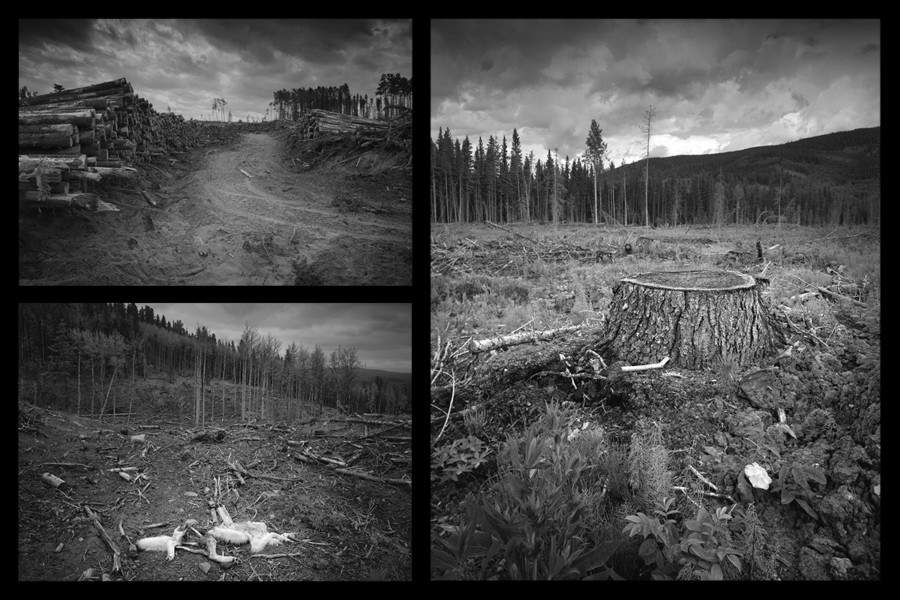
It’s no secret that, for centuries, forests around the world have been impacted and demolished as corporations clear land for agriculture and manufacturing efforts – making way for new factories, housing developments and more.
While deforestation is unfortunately becoming more of a rampant issue, sometimes these damaging processes are hidden in plain sight. On Earth Day, and every day, it’s important to stay educated about the damage being done to the land that so many animals call home.
For photographers like Olivier Du Tré, starting a new life in Canada led to a chilling discovery and a newfound passion for environmental activism. We connected with the Belgium-born, Alberta-based photographer to share his striking photos and to hear the story behind his photo project ‘Deep Cuts.’
Olivier is sharing his story below.
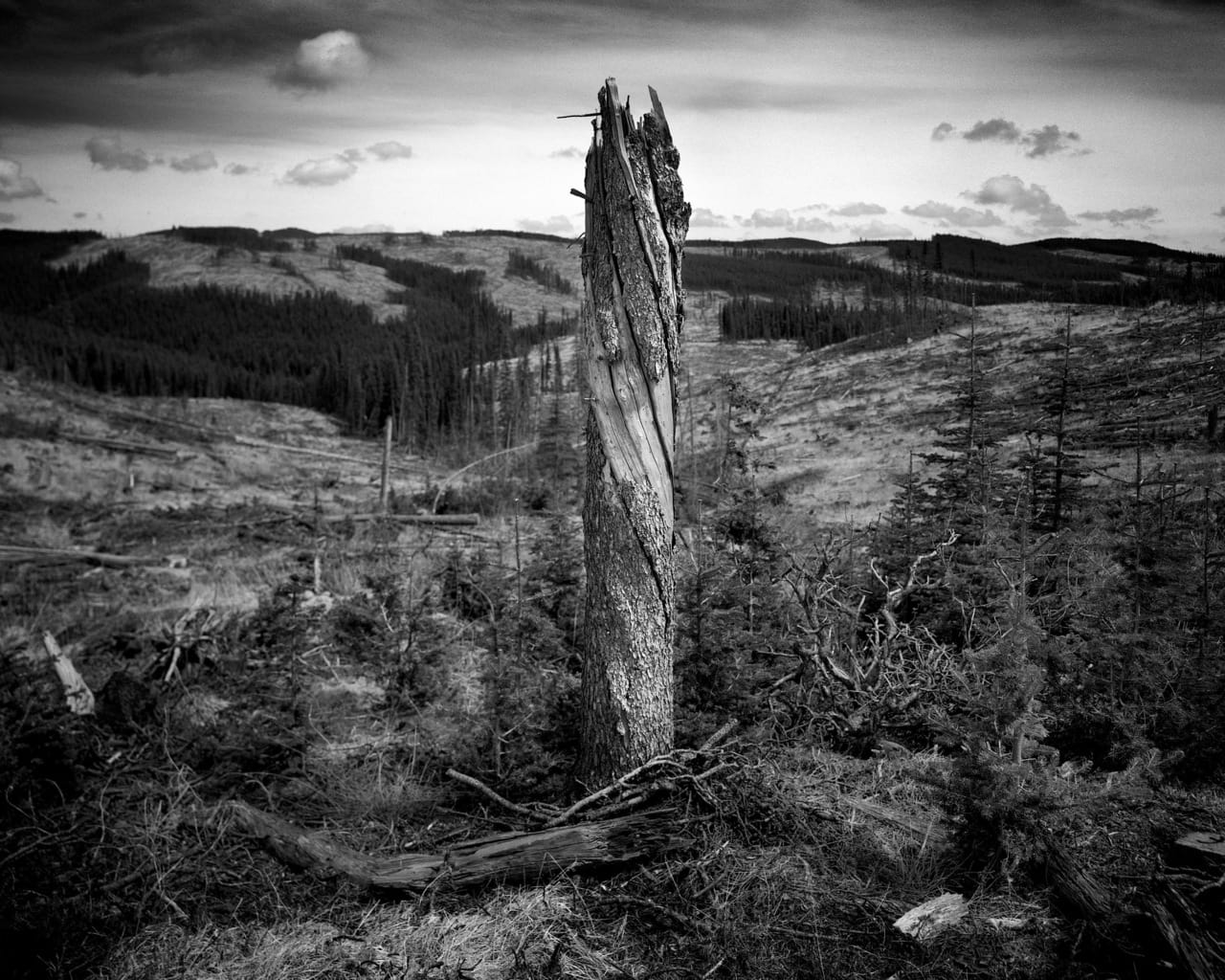
October 26, 2013. I will never forget that day. That was when Alberta’s mask fell off for me.
As a new Canadian citizen, I came to Canada with high hopes to witness and enjoy pristine nature, beautiful mountains and endless prairies. And for my first 4 years living in this province, that’s exactly what I saw.
I was out photographing on that fateful October day. And as I often do, I was just wandering around. Trying to see unique photographic happenstances. That day I was exploring a new area (to me) southwest of a town called Sundre. That’s when I discovered a fresh dirt road. That road took me straight into my first cut block. Everything in my life changed from that point forward.
You should know that I never was really into the whole ‘nature conservation thing’ when I was living in Belgium — my home country. I was an ‘out of sight, out of mind’-kind of guy.
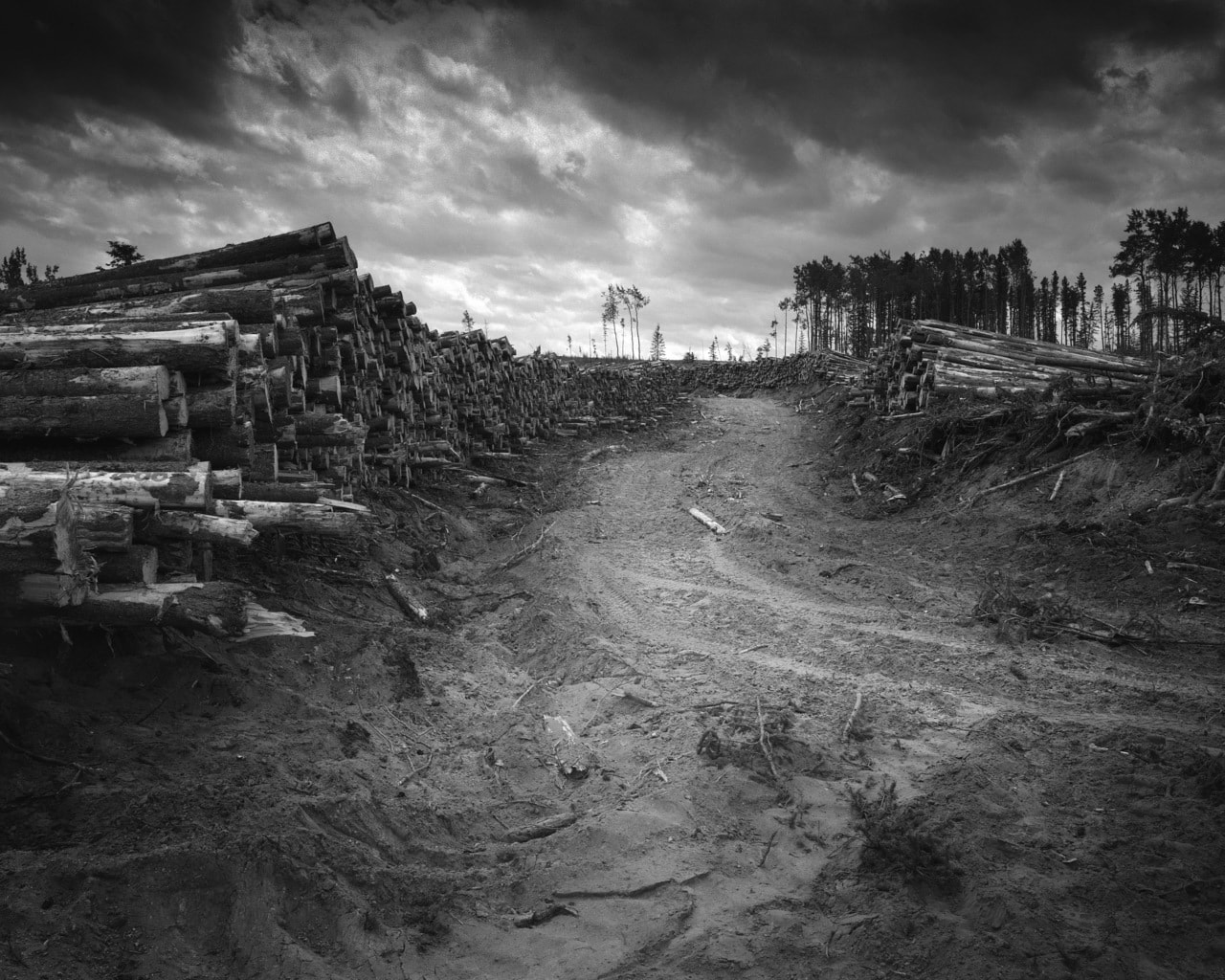
That October afternoon — while standing in that block — I got overwhelmed with emotions. Witnessing the view, I felt betrayed and lied to by our provincial government. Why wasn’t this industry not more scrutinized on what they are doing to the environment? I was floored by how disrespectful the industry was going about harvesting lumber. “There has to be a better way,” I thought. And why was this happening so close to the protected Rocky Mountains?
A strong urge to speak up came over me and I swore to do something with my craft — photography — to show this destruction to the people.
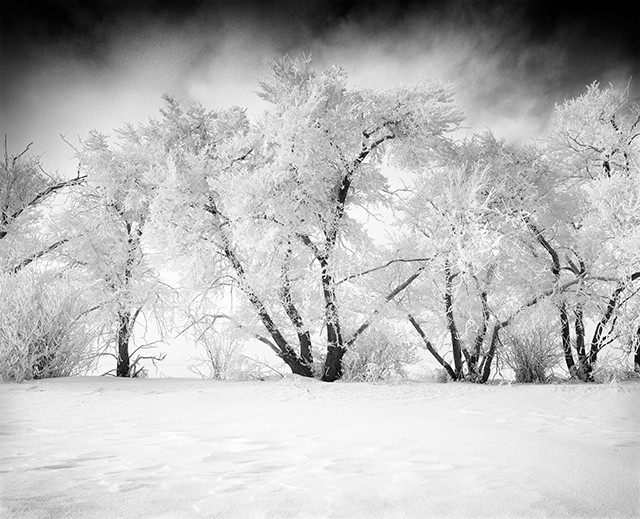
Since that day I have dedicated myself intensely to this subject matter. So much so that it has changed me as a person. The more I photographed these decimated habitats, the more I understood that this series was not just about ‘the trees’. I started re-interpreting my own work and life and it revealed that what I was really photographing was the disconnect between man and nature.
As a result of the series I am now involved with a group that is trying to protect our local forests, watershed and environment. I have attended meetings with environment officials and I have talked to the local sawmill professionals. This series also has been shown to my government’s forestry office.
Very few people outside the directly affected communities of Bragg Creek, Cochrane, Waiparus and Sundre seem to know what is going on in their loved backyards. This series shows the environmental and visual impact of a careless industry.
With this series I believe I have the ability to change people’s minds on this issue. One picture is worth a thousand words. And I hope this series is a prime example of that saying.
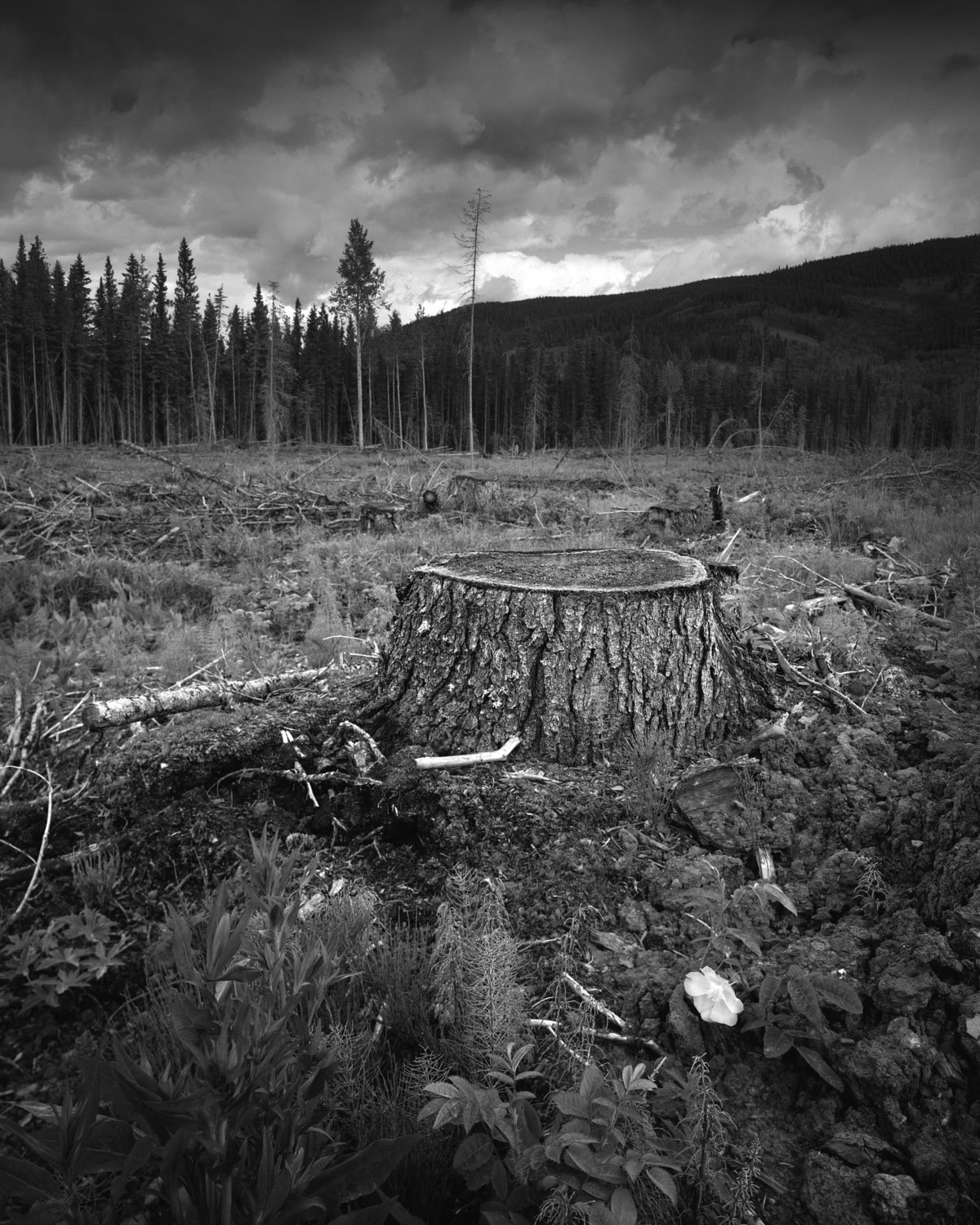
The large format 4×5” film, lenses and camera I use for all my work assured an abundance of detail throughout the photographic prints. I believe that through the use of a classic, timeless medium — like black and white photography — this series can stand the test of time and will be a lasting document of the legacy that our careless lumber industry left behind.
It wasn’t until the first time I came across a clearcut that I understood the massive impact of our actions. This series is the ultimate result of my intense search for the truth. My truth.
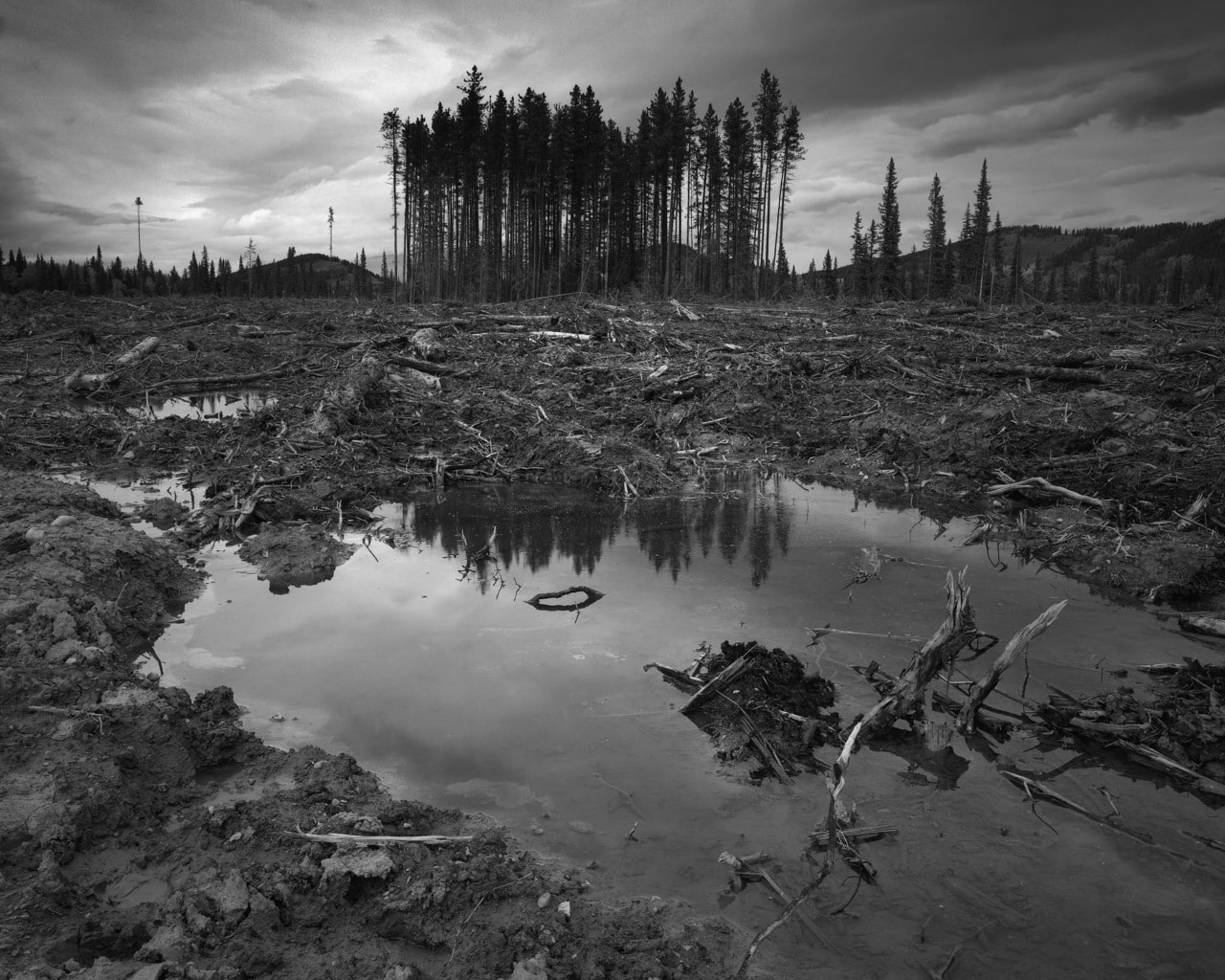
Learn more about Olivier’s gear, process and workflow:
For all my work, I use a basic entry level Shen Hao 4×5 camera that I had to repair a few times already, because clumsy me, dropped it a few times in the past. But that’s the beauty of these things. Nothing a bit of wood glue and some clamps can’t fix. I use the camera in combination with 3 Fujinon lenses. And there are two films I use for my landscape work: Ilford Delta 100 and Ilford FP4+. Each have different characteristics. Over time, I have learned which I prefer to use for the scene I am photographing, with Delta 100 used more often. I develop most of my negatives with one developer, Ilford Ilfotec DD-X.
My whole workflow has been calibrated around these combinations so that I can monitor what is happening on a technical level. These days I scan my negatives with a simple Epson flatbed and process them in Photoshop. By processing I mean simple dodge and burn techniques, just like I used to do in the darkroom. If I can’t ‘fix’ the photo in 10 minutes, then that photo isn’t worth working on.
All photos by Olivier Du Tré.
We’re paying tribute to our planet and celebrating Earth Day 2021 all week long. Want to share your story? Tag us in your photos (@photoshelter) on Twitter or Instagram. Then head to our Instagram page to see more photos from our passionate photo community.


